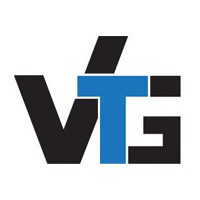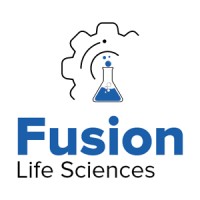

IMCS Group
Data Scientist
⭐ - Featured Role | Apply direct with Data Freelance Hub
This role is for a Data Scientist / Knowledge Graph Engineer in Austin, TX, on a contract basis. Key skills include expertise in graph databases, machine learning, AI-driven anomaly detection, and advanced programming in Python. Experience with Splunk log data is required.
🌎 - Country
United States
💱 - Currency
$ USD
-
💰 - Day rate
Unknown
-
🗓️ - Date
October 15, 2025
🕒 - Duration
Unknown
-
🏝️ - Location
On-site
-
📄 - Contract
Unknown
-
🔒 - Security
Unknown
-
📍 - Location detailed
Austin, TX
-
🧠 - Skills detailed
#Scala #TigerGraph #Databases #Data Science #Programming #Anomaly Detection #HBase #IP (Internet Protocol) #NetworkX #Data Engineering #Spark (Apache Spark) #Clustering #"ETL (Extract #Transform #Load)" #TensorFlow #Splunk #RDF (Resource Description Framework) #PyTorch #ML (Machine Learning) #Knowledge Graph #AI (Artificial Intelligence) #Cloud #Python #Neo4J #Graph Databases
Role description
Position: Data Scientist / Knowledge Graph Engineer
Location: Austin, TX (Onsite)
Contract
Job Description
We are seeking a Data Scientist / Knowledge Graph Engineer with deep expertise in semantic graph analytics,
AI-driven anomaly detection, and large language models (LLMs).
This individual will serve as a technical pioneer, designing, implementing, and validating novel methodologies to transform machine log data into ontology-driven semantic graphs that enable clustering, anomaly detection, and downstream analytics.
Required Skills & Experience
• Graph Expertise: Strong background in graph databases (Neo4j, TigerGraph), graph processing (NetworkX, DGL, PyTorch Geometric), and ontology modeling (OWL, RDF, Protégé).
• Machine Learning: Proven experience with graph embeddings, anomaly detection, clustering, and time-series analysis.
• AI/LLM Innovation: Hands-on experience applying or extending large language models for data representation, semantic reasoning, or code generation.
• Programming & Engineering: Advanced skills in Python, PyTorch/TensorFlow, Spark, and cloud-native pipelines.
• Research & IP Creation: Track record of innovation (patents, publications, novel algorithms).
• Communication: Ability to engage stakeholders with clarity, empathy, and influence
• Experience with Splunk log data or similar enterprise log platforms.
• Familiarity with graph-based anomaly detection benchmarks and scalable ML infrastructure.
• This role demands a thinker, builder, and innovator who thrives in customer-centric environments, can invent intellectual property, and can navigate the intersection of data engineering, graph representation learning, and AI/LLM-based methodology creation.
Position: Data Scientist / Knowledge Graph Engineer
Location: Austin, TX (Onsite)
Contract
Job Description
We are seeking a Data Scientist / Knowledge Graph Engineer with deep expertise in semantic graph analytics,
AI-driven anomaly detection, and large language models (LLMs).
This individual will serve as a technical pioneer, designing, implementing, and validating novel methodologies to transform machine log data into ontology-driven semantic graphs that enable clustering, anomaly detection, and downstream analytics.
Required Skills & Experience
• Graph Expertise: Strong background in graph databases (Neo4j, TigerGraph), graph processing (NetworkX, DGL, PyTorch Geometric), and ontology modeling (OWL, RDF, Protégé).
• Machine Learning: Proven experience with graph embeddings, anomaly detection, clustering, and time-series analysis.
• AI/LLM Innovation: Hands-on experience applying or extending large language models for data representation, semantic reasoning, or code generation.
• Programming & Engineering: Advanced skills in Python, PyTorch/TensorFlow, Spark, and cloud-native pipelines.
• Research & IP Creation: Track record of innovation (patents, publications, novel algorithms).
• Communication: Ability to engage stakeholders with clarity, empathy, and influence
• Experience with Splunk log data or similar enterprise log platforms.
• Familiarity with graph-based anomaly detection benchmarks and scalable ML infrastructure.
• This role demands a thinker, builder, and innovator who thrives in customer-centric environments, can invent intellectual property, and can navigate the intersection of data engineering, graph representation learning, and AI/LLM-based methodology creation.






